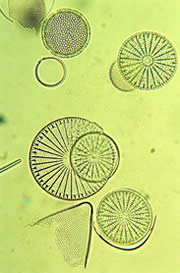Is life infested throughout the universe?
 Earth may be spreading the seeds of life throughout the galaxy. William Napier, an astronomer at the Ermach Observatory in Northern Ireland, says that it is possible that microbes "catch a ride" on dust grains and use the sun as a source of energy. Scientists have pondered whether life could have moved between solar systems since the nineteenth century. Some think that collisions between a planet, which contains life, and another celestial body may throw stones and rocks, which carry living organisms, into space. These frozen spores may make their way to other worlds - an idea known as "panspermia".
Earth may be spreading the seeds of life throughout the galaxy. William Napier, an astronomer at the Ermach Observatory in Northern Ireland, says that it is possible that microbes "catch a ride" on dust grains and use the sun as a source of energy. Scientists have pondered whether life could have moved between solar systems since the nineteenth century. Some think that collisions between a planet, which contains life, and another celestial body may throw stones and rocks, which carry living organisms, into space. These frozen spores may make their way to other worlds - an idea known as "panspermia".
However, the chances of such an event are quite slim. The spores must survive the impact of the meteor and the launch into space. After that, the rock will have to leave the solar system and land on another planet, which is capable of sustaining life. Also the rock will have to get there quickly. The radiation in space will cook any organism in space rock. For the most part, says Napier, "the rocks will become sterile by the time they reach the edge of the solar system."
Microbes will survive if they can escape the Sun's gravity quickly. Napier says that this may happen if the rocks on which the microbes sit are ground into dust.
Earth and the other planets in the solar system move through a cloud of grains, called zodiac dust. These are remnants of collisions in the asteroid belt and passage of comets.
This dust has the ability to cause wear and tear on anything that passes through it, says Napier. This process could grind up a meter-sized rock in 20,000 to 200,000 years, he estimates. If a comet breaks up in the area, as happens a few times every million years, it makes the dust thicker. As a result, the weathering process may occur within about five hundred years.
Napier says that a grain of dust less than a tenth of a millimeter wide may still carry living organisms. The pressure from the sun can blow such a small particle out of the solar system quickly. The same "pressure" force from the sun may one day be used to propel spaceships in the universe.
Such a grain can cover a distance of about six light years in 70,000 years - this is enough distance to reach other stars. We may be surrounded by a giant biodisc of frozen organisms, floating on rock grains, Napier says, that could migrate out of the solar system quite easily.
Earth probably spreads its seeds of life to the greatest extent when it passes through a huge molecular cloud, composed of material from which stars are formed. This transition has occurred about five times since life began on Earth.
Napier estimates that in each such transition about three billion trillion microbes passed from the earth to the cloud. He says that the chance of some of them reaching another Earth-like planet is quite high. A similar process may explain the appearance of life on Earth in the first place, he adds.
